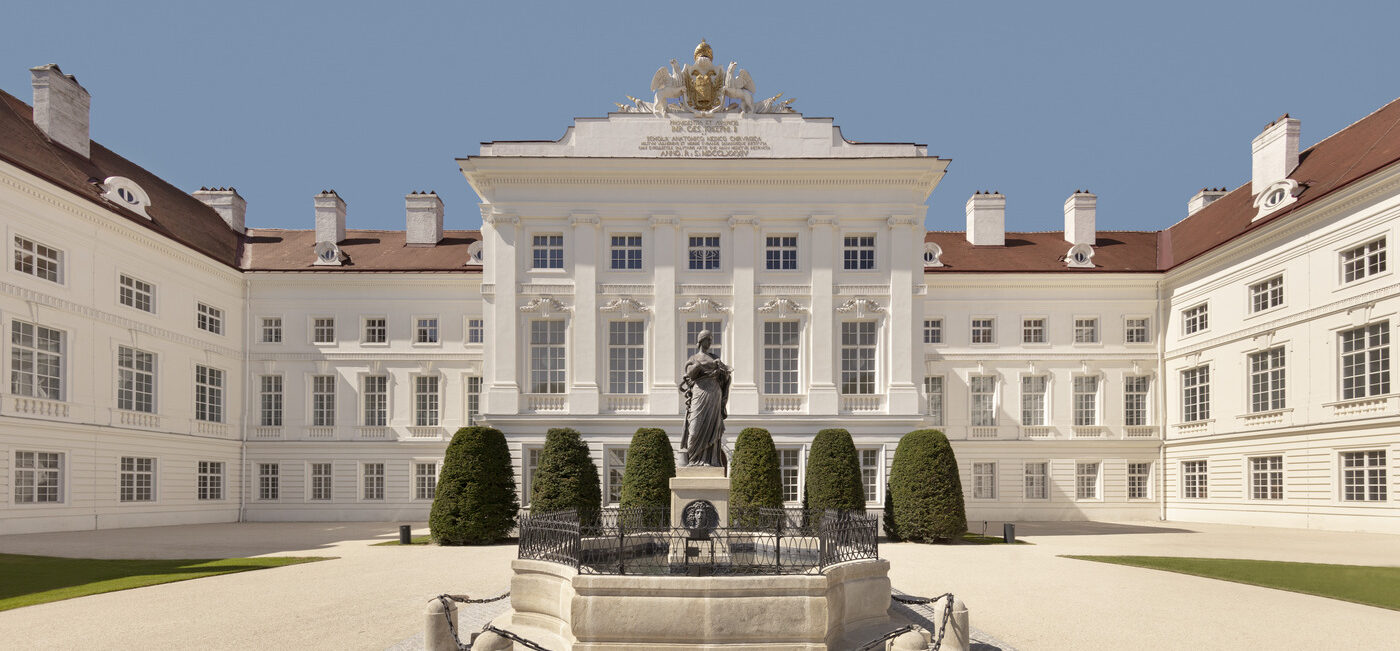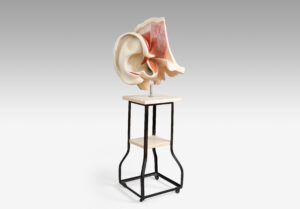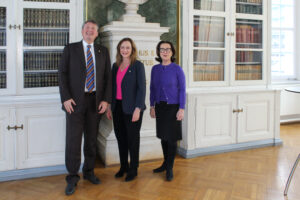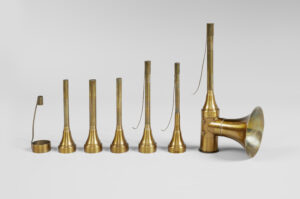Special exhibition to mark 150 years of the Vienna ENT Clinic at the Medical History Museum
Prof. Karen B. Avraham’s lecture at the Josephinum in Vienna on the current state of precision medicine for genetically caused hearing disorders was the prelude to the current special exhibition on the history of ENT medicine. The occasion for the exhibition is the anniversary of the ENT University Clinic in Vienna, which was founded in 1863 as the world’s first ear, nose and throat clinic.
Eva Kohl

"Two American researchers came up with the idea in the last century to look for a gene responsible for congenital diseases," explains geneticist Prof. Karen B. Avraham, PhD during her lecture at the Josephinum in Vienna. In fact, Theodore Friedmann and Richard Roblin presented their idea of improving patients' health by treating the respective genes in genetically caused diseases in the scientific journal Science in 1972. The first study on gene therapy was carried out in 1990: The preparation tested at the time for a rare, severe lipid metabolism disorder proved to be partially successful and promising.
Prof. Avraham is the dean of the Faculty of Medicine at Tel Aviv University in Israel, where she conducts research at the Department of Human Molecular Genetics and Biochemistry. Under the title Precision Medicine and Therapy for Genetic Diseases, the biologist presented current knowledge on genetically caused hearing disorders in the Josephinum lecture room in December 2023. To date, it is known that the variance of 180 genes can cause hearing impairment or even deafness. Although gene therapies for hearing disorders are not yet available, patients can already benefit from the research findings.
The ear medicine of the future

Anatomical ear model from the 20th century ©Josephinum/Bene Croy
Prof. Dr. Wolf-Dieter Baumgartner, MBA of the Medical University of Vienna clarified during the lecture: "Hearing disorders are a symptom." Knowing which gene causes congenital hearing loss would be more than just a prerequisite for gene therapy. Prof. Avraham presented data from a large-scale study in Israel and Palestine: in both population groups, 30 percent of genetic hearing disorders are attributable to a variance in connexin 26, a part of chromosome 13.
While syndromic genetic diseases cause multiple, sometimes severe symptoms, the consequences of the gene variance in a-syndromic connexin 26 hearing loss are limited to the hearing loss itself. Those affected need not fear any further limitations: Genetic clarification can therefore help to adapt the therapy precisely to the individual patient.
The genetic variance causing the hearing loss is also relevant for hearing success with a cochlear implant. "In the future, a genetic test after birth may help to eliminate the symptom of hearing loss," the scientist ventured to say in the lecture room at the Josephinum.
Wax models for "the ashamed Viennese women"

"From left to right: Prof. Dr. Wolf-Dieter Baumgartner, MBA, ENT University Clinic Vienna, Prof. Karen B. Avraham, Dean of the Faculty of Medicine, Department of Human Molecular Genetics and Biochemistry at Tel Aviv University in Israel and Dr. Christiane Druml, Director of the Josephinum and holder of the UNESCO Chair of Bioethics, in the lecture hall of the Josephinum." Eva Kohl
Established in 1785 by Joseph II as the Imperial-Royal Josephinian Military Academy of Surgery for future military doctors, the Josephinum now houses several institutes of the Medical University: ethics, collections and history of medicine, as well as the UNESCO Chair of Bioethics. However, from the very beginning, the building was also open to the public at certain times. And it soon became known for its extensive collection of wax models from the 18th century, which can be admired today in the rooms next to the lecture hall on the second floor.
In contrast to the controversial traveling exhibition Body Worlds, the wax models in the Josephinum are pure art products, created on the basis of anatomical drawings. Nevertheless, the lifelike and taboo-free depictions caused outrage at the time: "Even the shamed Viennese women go and look at the naked models!"
More recently, contemporary depictions of the body by the up-and-coming painter Alexandre Diop, who has settled in Vienna, form an artistic contrast to the lifelike models in the permanent exhibition on the second floor.
Focus on hearing - then and now

Historical otoscopes after 1865 ©Josephinum/Bene Croy
The exhibits on the ground floor, on the other hand, are dedicated to the development of medicine from the 18th century to modern times. The ground floor is also home to the special exhibition celebrating 150 years of the Ear Clinic in Vienna, which was still in preparation at the time of going to press. Curator Daniela Hahn, BA names the five main topics:
- The early history of otology
- The first school for deaf education in Vienna
- The development from ear doctor to ENT specialist and the instruments of ENT medicine
- The ear as a sensory organ
- The development of hearing aids up to the implant
The special exhibition, co-designed and co-initiated by Prof. Baumgartner, will also include some exhibits from the permanent exhibition. A handy short guide will explicitly point out these exhibits. To the mechanical ear model by Viennese physiologist Sigmund Exner Ritter von Erwarten, for example, or to the video wall where visitors can experience a cochlear implantation at Vienna University Hospital in real time.
One of the permanent exhibits in the hearing section shows the development of the human ear - in comparison to the development of a tadpole. A comparison that seems rather retro today. Today, for example, the mouse is used as a comparison in otology, as Prof. Avraham explained in his lecture: Whereas in humans the hearing organ is fully formed in the sixth month of pregnancy, in mice this takes until the twentieth day of life. However, the genes in mice are very similar to those in humans. In combination with the short life cycle of these animals, these are ideal conditions for researching future treatment methods for genetic hearing disorders. For the time being, genetic diagnostics and therapy are not yet a topic in the exhibitions at the Josephinum.
JOSEPHINUM - Museum of Medical History Vienna
Following its complete renovation, the Josephinum Museum of Medical History in Vienna-Alsergrund reopened its doors to the public on September 28, 2022.
The special exhibition de Auribus on 150 years of the ENT University Hospital Vienna will be on display from January 26 to October 5, 2024; special guided tours with Prof. Baumgartner are planned.
WHERE: Josephinum, Währinger Straße 25, 1090 Vienna
WHEN: open Wednesday to Saturday and on public holidays from 10 a.m. - 6 p.m., Thursday 10 a.m. - 8 p.m.





